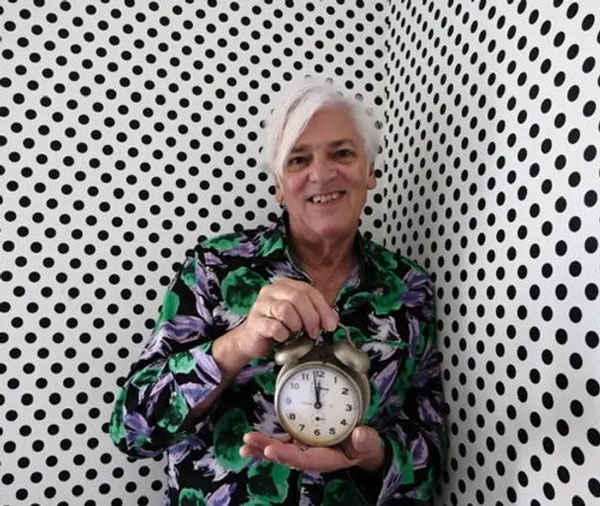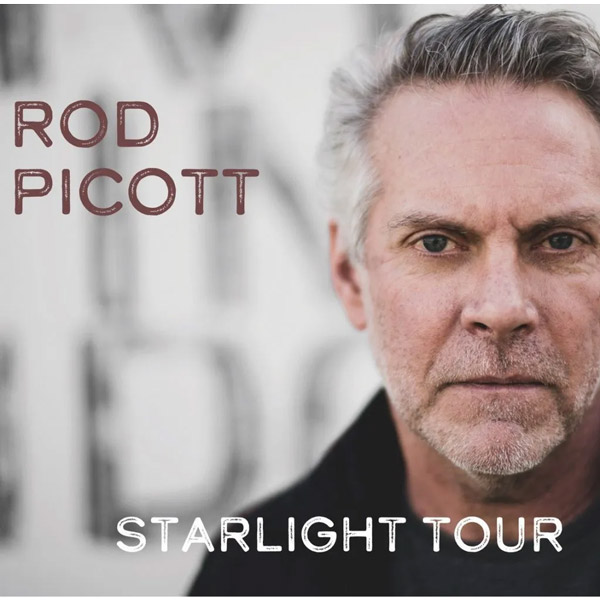By Spotlight Central, Photos by Love Imagery
originally published: 10/10/2022
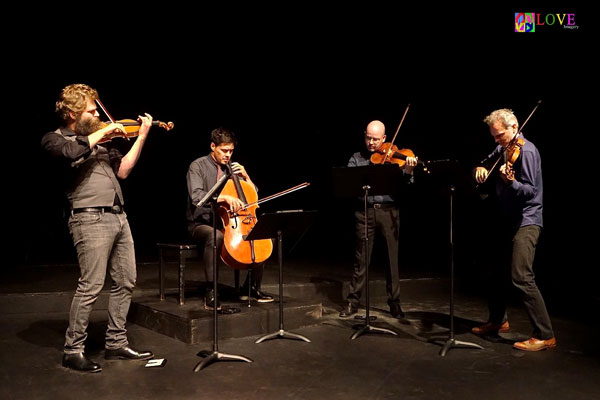
There’s a sense of intrigue inside Toms River, NJ’s Grunin Center for the Arts’ Black Box Theater this Thursday, September 29, 2022 evening as music lovers await a performance by the classical string quartet, Brooklyn Rider.
The members of Brooklyn Rider — Michael Nicolas on cello, Nicholas Cords on viola, Johnny Gandelsman on violin, and Colin Jacobsen on violin — enter the theater space and take their places in the center of the room just a few feet away from audience members who are seated on three sides of the stage area.
This intimate set-up provides a unique close-up musical experience which is perfect for appreciating this innovative string quartet.
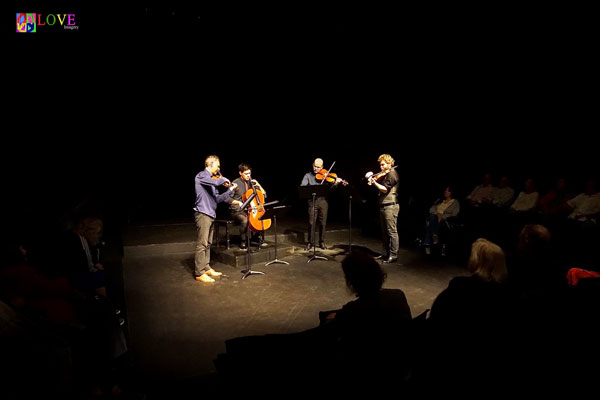
Without any introduction, the musicians visually connect with one another and cellist Michael Nicolas begins to play. Although the title of the piece is not announced, the audience is drawn into the expressive music emanating from Nicolas’ acoustic cello.
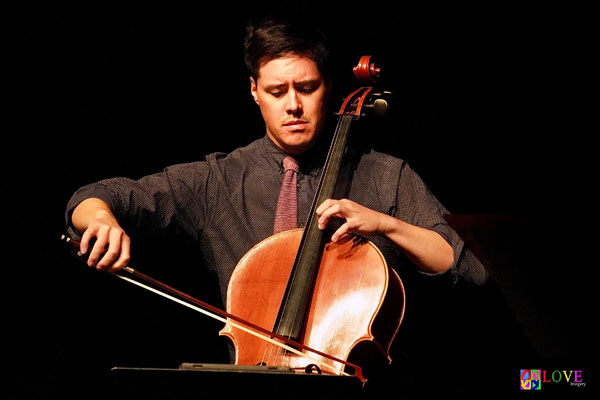
Concertgoers experience a jaunty country-sounding tune with a call and response taking place between the cello and the higher-sounding string instruments. Rhythmic bowing and plucking grabs the audience’s attention as the musicians take turns and the music bounces and winds throughout the room from wood and strings to the ears of the listeners. The music continues to twist and turn as the musicians play utilizing different techniques and styles to create a cacophony of instrumental delight.
Following a short pause, bell-like violin sounds accompany Nicholas Cords’ viola on a second tune which sings before Michael Nicolas’ cello adds its melancholy voice. The piece meanders from player to player — at times, mournful, and at times, pensive — before a happy melody with plucking accompaniment sweeps the audience onto a glorious wave of sound that transforms into an upbeat country song.
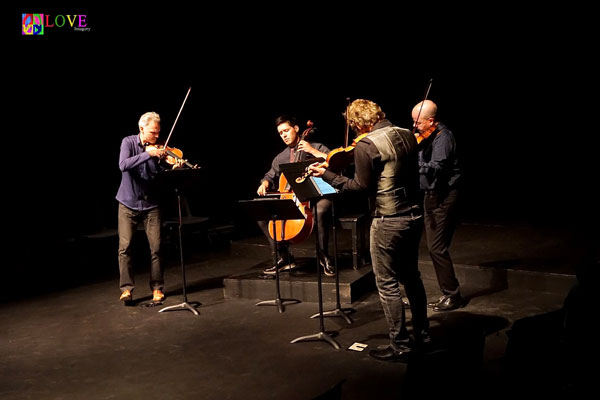
Percussive bowing and string-plucking takes over as Nicolas plays a bass line on his cello for the higher strings to fiddle over on a third folk song. At the piece’s conclusion, all four musicians lower their bows and are greeted by warm applause from the appreciative crowd.
Violinist Colin Jacobsen introduces himself and tells the audience about the quartet’s first piece, revealing that it was a collection of “Three Animal Folk Songs” by Ruth Crawford Seeger. According to Jacobsen, Seeger was an early 20th century composer and folk music expert, in addition to being the stepmother of folk musician Pete Seeger.
Jacobsen goes on to explain that tonight’s program is part of what Brooklyn Rider refers to as the “Four Elements” project — a program which is designed to raise attention to the world’s environment via the planet’s four core elements of “Earth,” Water,” “Fire,” and “Air” through performances which consist of a unique musical selection to represent each element.
Jacobsen reveals that whereas Seeger’s “Three Animal Folk Songs” represents the core element of “Earth,” the quartet’s next piece, “Undone” by Conrad Tao, represents the “Water” portion of tonight’s program.
“Undone” begins with Colin Jacobsen utilizing complex finger techniques on his violin to create waves of music, sawing his strings at times.
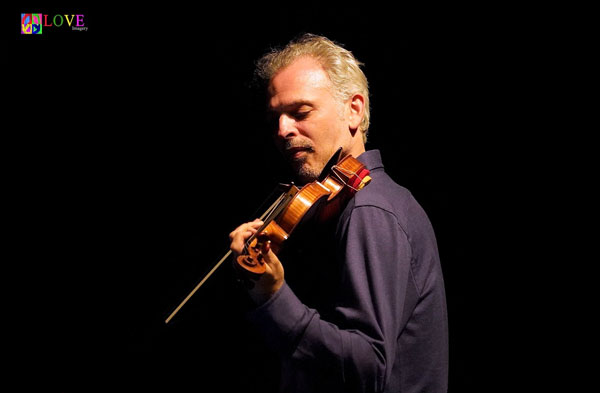
His colleagues join him in creating waves of sound on their instruments on this powerful composition filled with harmony and dissonance. The push and pull of the sounds between the musicians creates a tension which listeners in the Black Box Theater can viscerally feel.
As they play, the musicians watch one another — waiting, anticipating, and, finally, soaring on their instruments. They also move as they play — sometimes side to side, sometimes up and down — as they follow the aural wave of the music while creating a visual wave that connects them while engaging the audience.
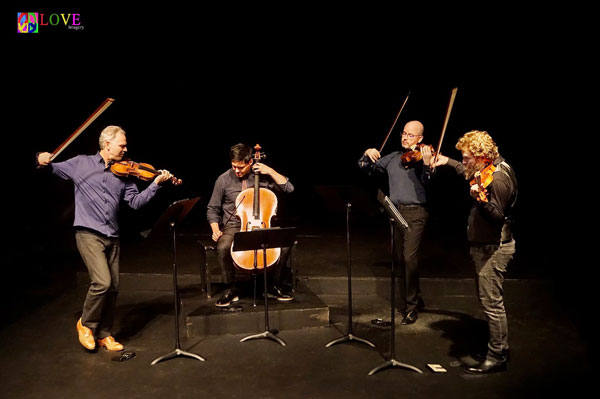
The sound ebbs and flows like the tide of ocean waves. The musicians also breathe in waves as they become one with their instruments. Here, in this intimate performance space, audience members can both see and hear each musician’s individual musical part as it intertwines to create a cohesive wave of sound that draws the listener in before coming to a satisfying conclusion.
Violinist Johnny Gandelsman tells the audience that the next piece — “String Quartet #8” by Shostakovich — represents “Fire,” and refers to the current situation in Ukraine when dedicating the piece “to the victims of fascism.”
The piece opens with Michael Nicolas’ cello, and the viola and violins follow. Gandelsman plays mournful legato lines on his violin.
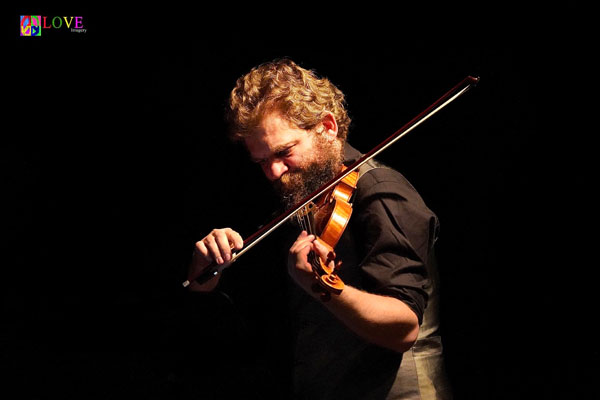
His melancholy melody cries over the long legato lines of the other instruments. The music sweeps from loud to soft and includes every dynamic in between until it comes ablaze with speed, precision, and technique. Then, the instrumentalists saw with a ferocity that changes the mood and intensity of the journey while engulfing classical music lovers in the audience.
The musicians’ physical stances change along with the mood as they play repetitive passages with different dynamics, making the music dance. Watching them perform, it seems as though the notes bounce from one instrument to the next as their synchronized bowing creates a visual dance to this complex composition. Coming to life through wood, gut, and horsehair tools, the performers manipulate these tools with expertise, creating art out of dots on a page that have been transformed into pixels on iPad screens, bringing humanity to these inanimate objects.
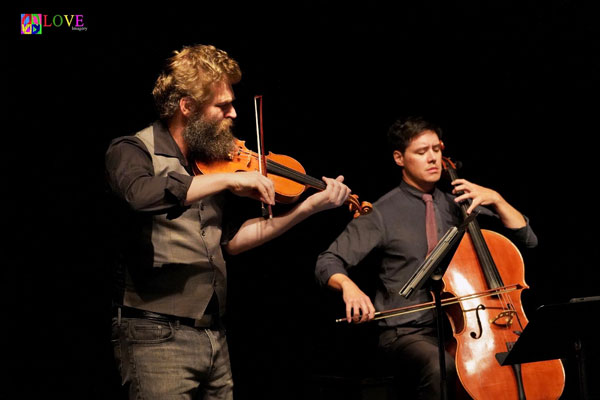
At the conclusion, the audience waits until all of the musicians have completed their parts, frozen for a moment as they let the music settle in the air like smoke left over from a recent fire. Once the musicians relax their posture, the audience breaks the mood with appreciative applause showing that they, too, have become one with the music.
Cellist Michael Nicolas speaks about the next piece, “Tenebrae” by Osvaldo Golijov, explaining that it represents the “Air” portion of tonight’s presentation. According to Nicolas, the piece was inspired by two contrasting events which took place in 2000 when, during one week, Golijov experienced the violence of the Middle East, and the next week, visited the New York Planetarium with his five-year-old son and observed images of our beautiful blue planet from space. As such, Nicolas explains that this piece portrays extreme beauty with pain underneath.
On this stirring composition, along with Nicolas on cello, Nicholas Cords introduces a celestial-sounding interplay on viola that is soon joined by the long tones of the violins.
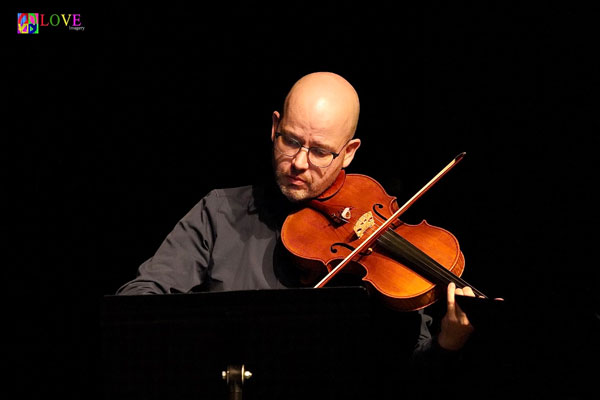
The musicians glide as they move with their instruments to create heavenly vibrations that float above, under, and around one another like layers of clouds. The angelic sounds are then interrupted by mournful viola and cello lines as the music changes and morphs slowly in mood.
Repetitive rhythmically pulsing violin lines played in harmony increase in intensity as Cords’ viola adds its voice and Nicolas bows long tones on his cello. The ever fluid music conveys conflict and turmoil before it returns to a more peaceful mood, ending with a serene theme that gently floats through the air from the delicate bows of these master musicians.
The audience responds with extended applause of recognition for the instrumentalists’ musical gifts. The musicians bow and exit, leaving the audience with a rich program experience to reflect on that allows them to ponder the “Four Elements” of our environment with a new perspective.
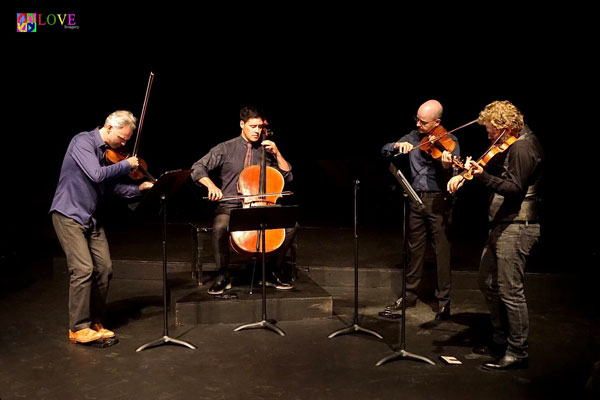
To learn more about Brooklyn Rider, please go to brooklynrider.com. For information on upcoming programs at Ocean County College’s Grunin Center for the Arts — including The Ephrat Asherie Dance Company on October 21, The Mariel Bildsten Septet on November 20, The Westminster Concert Bell Choir on December 2, and The Vienna Boys Choir on December 8 — please click on grunincenter.org.
Photos by Love ImagerySpotlight Central. Your source for Jersey entertainment news and reviews
Love Imagery Fine Art Photography. all you need. peace/love/flower/power
FEATURED EVENTS
Narrow results by date, categories, or region of New Jersey.

Trombone Shorty & Orleans Avenue
Thursday, November 21, 2024 @ 7:30pm
State Theatre New Jersey
15 Livingston Avenue, New Brunswick, NJ 08901
category: music
View event page for full information

Randall Goosby Returns: Renaissance Quartet
Thursday, November 21, 2024 @ 7:30pm
McCarter Theatre Center (Matthews Theater)
91 University Place, Princeton, NJ 08540
category: music
View event page for full information

Marshall Crenshaw - Up Close & Personal
Thursday, November 21, 2024 @ 7:30pm
Lizzie Rose Music Room
217 E. Main Street, Tuckerton, NJ 08087
category: music
View event page for full information
More events
Event Listings are available for $10 and included with our banner ad packages
EVENT PREVIEWS

Renaissance Quartet Brings Bold Innovation and Classical Mastery to McCarter Theatre on Thursday
(PRINCETON, NJ) -- Prepare to be captivated by the Renaissance Quartet, featuring violinists Randall Goosby and Jeremiah Blacklow, violist Jameel Martin, and cellist Daniel Hass. Graduates of the Juilliard School and mentored by the legendary Itzhak Perlman, the Quartet brings a unique blend of classical mastery and innovative flair to McCarter Theatre on Thursday, November 21, 2024 at 7:30pm. Known for reimagining chamber music traditions, this New York based ensemble combines technical excellence with a bold, forward-thinking approach that appeals to a diverse audience.
UPCOMING EVENTS

Rod Wave - Last Lap Tour comes to Prudential Center in December
(NEWARK, NJ) -- This Fall, AG Touring and Mammoth, Inc. proudly present the Rod Wave - Last Lap Tour. This large-scale multi-city outing will feature Rod Wave headlining 36 of North America's top arenas coast-to-coast. The tour will kick off on October 19 at Desert Diamond Arena in Phoenix, AZ visiting major markets across the country, including Newark’s Prudential Center on Tuesday, December 3, 2024 with special guests Moneybagg Yo, Toosii, Lil Poppa, Dess Dior and Eelmatic.


















